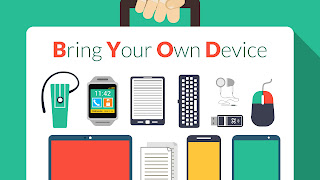Twitter Feed
Robert Duffner Interviews Chris Kemp, NASA, and Kevin Jackson, NJVC, on GovCloud
Recently, I had the pleasure of being interviewed by Mr. Robert Duffner, director of Product Management for Windows Azure, as part of his “Thought Leaders in the Cloud” series. In this interview,…
NJVC, Invertix Announce Cloud Computing Demonstration at GEOINT 2010
VIENNA, Va. — (BUSINESS WIRE) — NJVC®, one of the largest providers of information technology (IT) solutions to the U.S. Department of Defense, and Invertix Corporation, a proven technology company…
On The Frontlines: Cloud Computing in Government
Today, Trezza Media Group released the latest installment of it’s “On The Frontlines” series of government technology reports. The “On The Frontlines” Publications are dedicated to showcasing the positive progress…
GSA Awards Eleven US Federal IaaS Contracts
According to Federal News Radio, GSA awarded eleven vendor spots in the first Federal cloud infrastructure-as-a-service award. The winners were: * Apptis Inc. partnered with Amazon Web Services* AT&T* Autonomic…
NIST To Hold 2nd Cloud Computing Forum & Workshop
On November 4-5, 2010, the National Institute of Standards and Technology (NIST) will hold their second Cloud Computing Forum & Workshop. During this event, NIST will report on the status of federal…
“On The Frontlines” Interview
Look out for “On The Frontlines: The Government Cloud” scheduled for release in November 2010! Trezza Media Group provides high-quality thought leadership media and marketing services to help companies connect…
Yongsan Army Garrison Does Cloud Computing!!
First Signal is ready for the cloud ! Even with the time constraints of the Chusok holiday and the onslaught of a 100-year flood, the class soldiered on with five…
Army Cloud Computing in Korea!
After a long uneventful flight, I’ve arrived at Yongsan Army Garrison in Soeul Korea. After enjoying the economy accomodation on a Boeing 777 for over 14 hours, my room and…
The Taiwan GovCloud
Last week, Henry Kenyon of Federal Computer Week reported that the Taiwanese government is planning to spend $744M to develop cloud computing technology. Premier Den-yih Wu sees this as a…
Geospatial Cloud Computing In Support Of National Policy
A few weeks ago I once again had the pleasure of participating in a private discussion on cloud computing with Mr. Vivek Kundra. What struck me in this most recent meeting was his views…
- Increased employee mobility (63%), satisfaction (56%) and productivity (55%) dominate as the top drivers of BYOD. These employee related drivers are considered more important than reduced costs (47%).
- Security (39%) and employee privacy (12%) are the biggest inhibitors of BYOD adoption.
- 20% of surveyed organizations have suffered a mobile security breach, primarily driven by malware and malicious WiFi.
- Security threats to BYOD impose heavy burdens on organizations’ IT resources (35%) and help desk workloads (27%).
- Despite increasing mobile security threats, data breaches and new regulations, only 30% of organizations are increasing security budgets for BYOD in the next 12 months and 37% have no plans to change their security budgets.
- 72% – Data leakage/loss
- 56% – Unauthorized access to company data and systems
- 54% – Downloading of unsafe apps or content
- 52% – Malware
- 50% – Lost or stolen devices
- 49% – Vulnerability exploitation
- 48% – Lack of control on endpoint security
- 39% – Infrequent software updates
- 38% – Compliance
1. Create your policy before procuring technology: To effectively use mobile device management (MDM) technology for employee owned devices Policy must precede technology. Also note that these policies will have broad corporate-wide implications for IT, HR, legal, and security.
- Mobile device management
- Application security assessments
- Application testing services
- Application source code security assessments; and
- Embedded device security.
This post was brought to you by IBM Global Technology Services. For more content like this, visit ITBizAdvisor.com.
( Thank you. If you enjoyed this article, get free updates by email or RSS – © Copyright Kevin L. Jackson 2017)
Cloud Computing
- CPUcoin Expands CPU/GPU Power Sharing with Cudo Ventures Enterprise Network Partnership
- CPUcoin Expands CPU/GPU Power Sharing with Cudo Ventures Enterprise Network Partnership
- Route1 Announces Q2 2019 Financial Results
- CPUcoin Expands CPU/GPU Power Sharing with Cudo Ventures Enterprise Network Partnership
- ChannelAdvisor to Present at the D.A. Davidson 18th Annual Technology Conference
Cybersecurity
- Route1 Announces Q2 2019 Financial Results
- FIRST US BANCSHARES, INC. DECLARES CASH DIVIDEND
- Business Continuity Management Planning Solution Market is Expected to Grow ~ US$ 1.6 Bn by the end of 2029 - PMR
- Atos delivers Quantum-Learning-as-a-Service to Xofia to enable artificial intelligence solutions
- New Ares IoT Botnet discovered on Android OS based Set-Top Boxes


